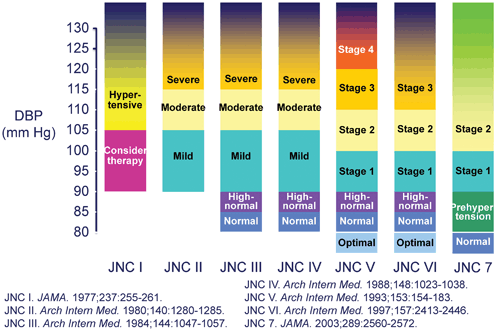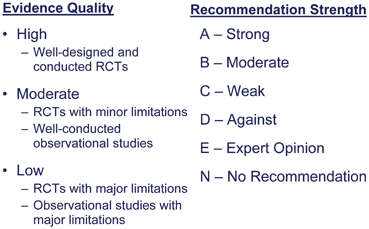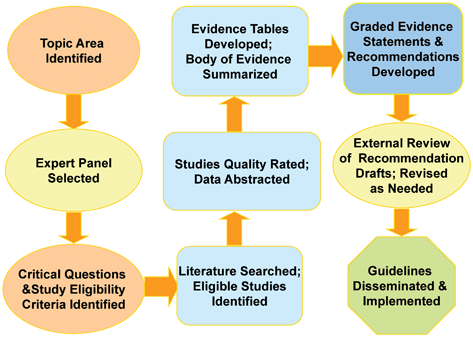Fig. 1.1
JNC overview of systolic BP. To simplify the classification of hypertension, the seventh report of the Joint National Committee on Prevention, Detection, Evaluation, and Treatment of High Blood Pressure (JNC 7) has reclassified stages 2 and 3 hypertension as outlined in JNC VI as “stage 2” hypertension. JNC 7 also introduces a new term, “prehypertension” to include individuals with BP measurements between 120 and 139 mmHg systolic BP among those requiring intervention. Background: Simplification of the classification of hypertension was one of the three main goals of the JNC 7 report. The other two goals were to include recently published clinical trials in the recommendations and to urgently provide updated hypertension guidelines. The inclusion of the new class “prehypertension” recognizes that the risk of vascular morbidity and mortality becomes evident at BP levels as low as 115/75 mmHg in adult patients

Fig. 1.2
JNC overview of diastolic BP. To simplify the classification of hypertension, the seventh report of the Joint National Committee on Prevention, Detection, Evaluation, and Treatment of High Blood Pressure (JNC 7) has reclassified stages 2 and 3 hypertension as outlined in JNC VI as “stage 2” hypertension. JNC 7 also introduces a new term “prehypertension” to include individuals with BP measurements between 80 and 90 mmHg diastolic BP among those requiring intervention. Background: Simplification of the classification of hypertension was one of the three main goals of the JNC 7 report. The other two goals were to include recently published clinical trials in the recommendations and to urgently provide updated hypertension guidelines. The inclusion of the new class “prehypertension” recognizes that the risk of vascular morbidity and mortality becomes evident at BP levels as low as 115/75 mmHg in adult patients
Given a history of rigorous review of each of the JNCs by acknowledged experts in the field and further review by more than 45 different groups, all involved in hypertension including the American Society of Hypertension, American Society of Nephrology, and AHA, one has to ask why the process changed in 2007. This was the year, 2007, the next JNC committee was to assemble and develop what would have been JNC 8. The answer is twofold: one is a lack of funds to carry out the process as before and second there was a ground swell of concern initiated by the AHA report that of all their consensus reports only 9 % had level 1 quality evidence with the majority of other guidelines being expert opinion [6]. This coupled with a political climate of concern regarding the influence of drug companies on the guidelines, based on little evidence, changed the entire process. The new process mirrors the National Institute for Health and Care Excellence (NICE) guidelines in the UK [7]. The evidence-based grading system used in JNC 8 is shown in Fig. 1.3 [8].

Fig. 1.3
NHLBI evidence quality rating and recommendation strength JNC 2013
Upon reviewing the JNC guidelines , certain questions arise. First, were the previous JNC reports not evidence-based? Why the format change and what is it changing into? Should evidence-based medicine be the only way to practice or is it just the minimum standard that everyone should achieve? It is clear that not all aspects of hypertension have a good evidence base but clinicians are faced with patients daily that demand answers that are not always evidence-based but also require clinical judgment. This is true regardless of outcomes since the trials are only as good as the inclusion criteria they employ to recruit patients. Hence, there are major limitations as well to evidence-based approaches.
JNC 7 created an algorithm for the treatment of hypertension [1]. This started with lifestyle modifications for all patients. If the BP was not at goal after this (defined as < 140/90 mmHg and < 130/80 mmHg for those with diabetes or kidney disease), then medical therapy would be needed. The choice of medical therapy depends on whether there are compelling indications for a specific drug, such as angiotensin-converting enzyme inhibitors (ACEi), angiotensin receptor blockers (ARBs) , or beta-blockers. In the absence of compelling indications, the severity of BP guided the decision as to initial mono- or single-pill combination therapy. In stage 1 hypertension, defined as SBP of 140–159 mmHg or diastolic BP (DBP) of 90–99 mmHg, thiazide-like diuretics were suggested as initial agents for most patients. In stage 2 hypertension, defined as SBP > 160/100 mmHg, a two-drug combination was recommended, usually a thiazide-type diuretic in addition to a blocker of the renin–angiotensin system (RAS) [1]. If BP remains uncontrolled despite these treatments, then the doses need to be increased or additional drugs added until the goal BP is achieved. If adding a third or fourth drug fails to achieve the BP goal, a board-certified hypertension specialist should be consulted.
The JNC 7 was helpful in that it gave compelling indications classes of drugs to be used for BP control based on the best available randomized placebo controlled trials [1]. It summarized data for BP management in a variety of concomitant conditions, such as heart failure post myocardial infarction (MI), chronic kidney disease , stroke, and diabetes. It also provided guidance on the delayed development or prevention of hypertension based on evidence from trials.
Given this background in 2008, the NHLBI developed new directions for cardiovascular prevention guideline development that would encompass all future guidelines. In effect, they are starting over with an evidence-based process performed by nonclinician epidemiologists/statisticians who would dispassionately review the data and then provide guidance for grading by the committee. The updated clinical recommendations on BP and cholesterol control and obesity used this process of systematic review of the literature based on selecting studies meeting specific criteria and then grading the evidence and providing recommendations. They recommend standardizing and coordinating approaches to develop consistent recommendations for lifestyle and risk assessment. After each of these guidelines is completed, which is now the case for all three guidelines as of March 2013, an integrative fourth guideline for clinicians is planned for release within the next 2 years.
The NHLBI recommends a series of steps, from identification of the topic area to the dissemination of the final guidelines, Fig. 1.4. Briefly, after a topic area is identified, an expert panel is selected which asks critical questions and studies eligibility criteria. The literature is then searched with eligible studies identified then selected based on their quality. Evidence tables are developed, the body of evidence summarized, and graded statements and recommendations are developed. These are subject to an external review including by government officials, i.e., Centers for Medicare and Medicaid services (CMS) and revisions are made. The guidelines are then disseminated and implemented.

Fig. 1.4
NHLBI systematic review and guideline development process. Here, we see the series of steps for the systematic reviews and guidelines development—from identification of the topic area to dissemination of the final guidelines. The blue box at the top right is circled in red because this is where the panel is now
JNC 8 was initially supposed to address five key questions. Unfortunately, there was only enough time and money to address three questions. The three questions are: (a) Among adults, does treatment with antihypertensive pharmacological therapy to a specific BP goal lead to improvements in health outcomes? (How low should you go?) (b) Among adults with hypertension, does initiating antihypertensive pharmacological therapy at specific BP thresholds improve health outcomes? (When to initiate drug treatment?) (c) In adults with hypertension, do various antihypertensive drugs or drug classes differ in comparative benefits and harms on specific health outcomes? (How do we get there?)
To address these questions, studies from randomized controlled trials done after 1966 with at least a 1-year follow-up and a minimum of 100 patients were included [8]. The review found 56 trials met the criteria for determining specific BP goals, 26 to determine when to initiate treatment, and 66 for determining the choice of treatment.
The question of what is the goal BP needed to improve health outcomes has already been answered by two already published guidelines. The American Diabetes Association notes < 140/80 mmHg for those with diabetes [9] and the Kidney Disease Improving Global Outcomes (KDIGO) and Kidney Dialysis Outcome Quality Improvement (KDOQI) guidelines note < 140/90 mmHg for those with chronic kidney disease [10]. The goal for the elderly of < 150/80 mmHg was proposed by the AHA as well [11]. Although after public review, the goal became < 140/90 mmHg, it remains acceptable if between 140 and 145 mmHg. The JNC 8 does not differ markedly from these results as members of JNC 8 also served on these committees including an author of this chapter.
Multiple post-hoc analyses and one prospective trial support the goal BP put forth for high-risk patients and those with diabetes. A post-hoc analysis of the Ongoing Telmisartan Alone and in combination with Ramipril Global Endpoint Trial (ONTARGET) noted that the composite outcome of cardiovascular risk , MI, stroke, or hospitalization for congestive heart failure, achieved a nadir at an SBP of 130 mmHg [12]. Post-hoc analyses of the Avoiding Cardiovascular Events through Combination Therapy in Patients Living with Systolic Hypertension (ACCOMPLISH) trial also demonstrate similar benefits for SBP levels down to 130 mmHg but risk increased as levels went below this nadir [13]. Finally, post-hoc analysis of the diabetes cohort of the International Verapamil SR-Trandolapril Study (INVEST) trial (N > 7000) demonstrated that those with an SBP of 130–140 mmHg had fewer cardiovascular events than those > 140 mmHg [14]. However, in those with a BP < 130 mmHg, no additional benefit on mortality was noted. In all these trials, however, stroke risk continued to decline with decreasing SBP without a similar nadir. This suggests that there is an increased risk of cardiovascular events except stroke in patients with extensive vascular disease when the BP is decreased below a critical level [13–15].
Stay updated, free articles. Join our Telegram channel

Full access? Get Clinical Tree






